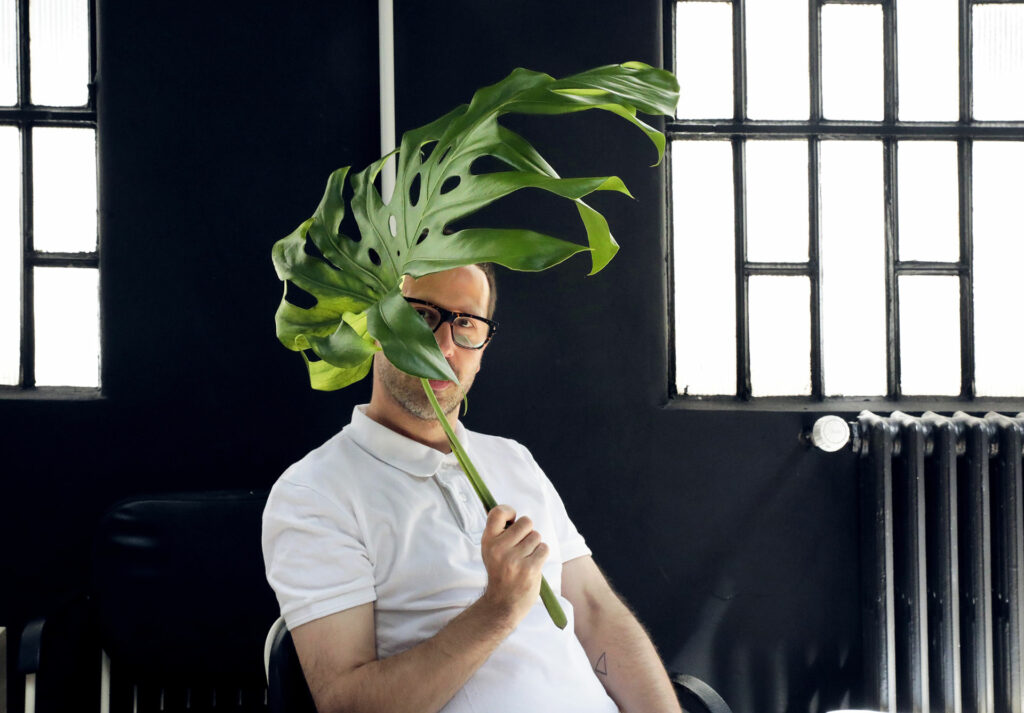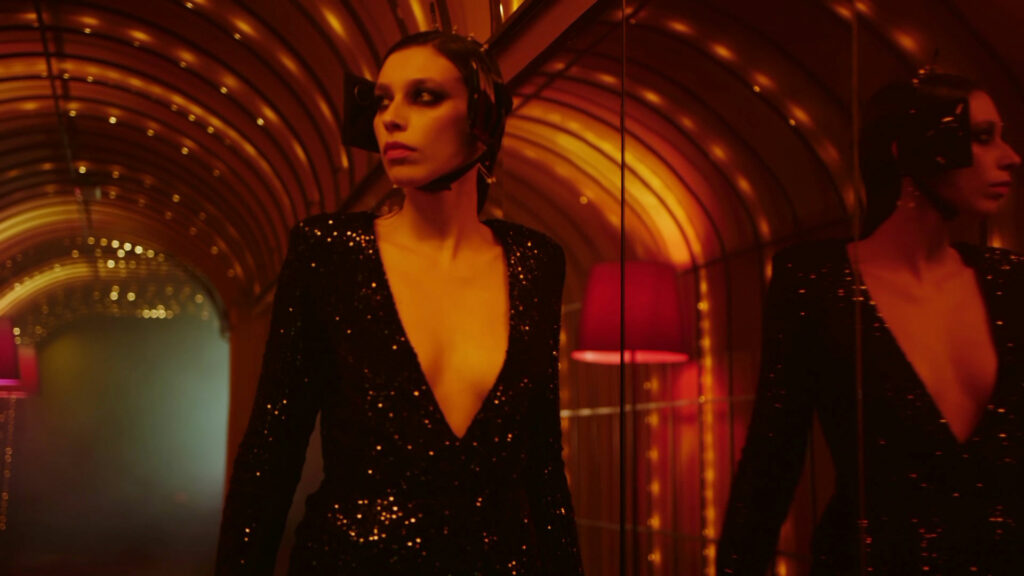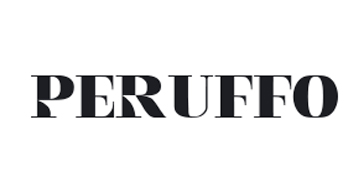
portrait by Sara Scanderebech
We are meeting the artist Jacopo Miliani, with whom Peruffo has had the pleasure to collaborate on the occasion of La Discoteca, a project which is focused on the first cinematographic work of the artist, but that is declined in many ways, from an exhibition to a workshop and a performance. Jacopo tells us what has gone on behind the scenes and the fun facts of this intriguing multi-disciplinary artwork.
Can you tell us something about La Discoteca, how was the project born and which are its different elements?
La Discoteca is a project which was born before the pandemic. I was already thinking about the discos of the future and their transformation. The project has many different sides: a workshop, some performances, an installation and most of all a movie, which wants to subvert the rules of reality through its fantastic and ironic tones. La Discoteca is also a book published by Via Industriae Publishing which contains a text I wrote and other texts by Elisa Del Prete, Mariuccia Casadio, Sara de Giovanni, Luca Locati Luciani and Eva Robin’s. You can browse through the entire process on the IG account @ladiscoteca_film
This is your first movie, how did you deal with the cinematographic medium as an expressive tool?
I had a lot of fun… even if I took everything very seriously. It has been a great journey and adventure during which I got to know wonderful people and in which I involved many friends and precious collaborators. Gaia Formenti supported me with the playwriting. Sara Scanderebech documented the whole set. Thomas Costantin wrote the music scores and Giancarlo Morieri directed the movie photography. Alessandra Mancini created the graphics. The production has been curated by Elisa Del Prete and Silvia Litardi. Seeing the actors and actresses on set has been very touching: Eva Robin’s, Eugenia Delbue, Pietro Turano, Anna Amadori, Charlie Bianchetti, Alex Paniz and Kenji Benji.
Some jewels by Peruffo distinguished the characters; can you tell us how did you select them and if they somehow helped the actors to express themselves?
Every detail of the movie has been created in relation to the characters and their story… I’m not telling you much about the story itself because I hope you’ll have the chance to see the movie. For sure the pieces of jewelry are not only objects, and it’s the body that make them move and dance… They are also telling their own story.
What do you think about collaborations? Is there someone you would like to collaborate with?
Collaborations and relationships are the basis of my design and research method. La Discoteca is the result of over thirty collaborations… I can’t list them all.
Tell us about a contemporary artist and a designer you find important and why.
I can’t choose only one… Kenneth Anger, Isa Gesken, Pauline Cournier Jardin, AA Bronson, Raf Simons, Tina Chow, Cinzia Ruggeri, David Lynch, Sion Sono, Sylvain Bussotti, Andy Kaufman and many many others…
A short-term project and a long-term one you would like to realise.
Short term: another movie
Long term: another movie
La Discoteca is a project by Jacopo Miliani.
It has been realised thanks to Italian Council, Direzione Generale Creatività Contemporanea, Ministero della Cultura in collaboration with APS Arcigay Il Cassero, cultural association Bottega Bologna, Foundation If I Can’t Dance, I Don’t Want To Be Part of Your Revolution (Amsterdam), Association Run by a group / openspace (Nancy), with public acquisition by Centro per l’arte contemporanea Luigi Pecci (Prato).
Jacopo Miliani was born in Florence and studied at DAMS in Bologna and Central Saint Martins College in London. His works has been presented in galleries and museums in Italy and worldwide. He worked with performers such as Jacopo Jenna, Annamaria Ajmone, Sara Leghissa, Antonio Torres, divaD, Benjamin Milan, Mathieu LaDurée, Eve Stainton, and he collaborated with director Dario Argento, writer Walter Siti, fashion designers Boboutic, music producer Jean-Louis Hutha and semiotics researcher Sara Giannini. His works has been displayed in many different spaces such as: GUCCI Garden Cinema da Camera, Florence (2019), GAMeC, Bergamo (2019), Centro Pecci per l’arte Contemporanea, Prato (2019), Galeria Rosa Santos, Valencia (2018), Palais de Tokyo, Paris (2017), David Roberts Art Foundation, London (2017), Kunsthalle Lissabon, Lisbon (2016), ICA studio, London (2015), MADRE, Naples (2011), Studio Dabbeni, Lugano (2014 and 2010). His artistic practice, being always multi-disciplinary, focuses on topics like identity quest, performativity, the queer universe, the relationship among spoken and written language and body expression.
Instagram: @ladiscoteca_film
@milianijacopo

La discoteca, 2021 – Courtesy Centro Pecci per l’arte contemporanea Progetto Italian Council 2020 con la curatela di NOS Visual Arts Production

La discoteca, 2021 – Courtesy Centro Pecci per l’arte contemporanea Progetto Italian Council 2020 con la curatela di NOS Visual Arts Production

La discoteca, 2021 – Courtesy Centro Pecci per l’arte contemporanea Progetto Italian Council 2020 con la curatela di NOS Visual Arts Production

A slow dance without a name, 2016 – Kunstalle Lissabon Photo credit by Bruno Lopes

Throwing Balls at Night di Jacopo Miliani, 2021 – Photo credit Simone Dipietro for OGR Torino

